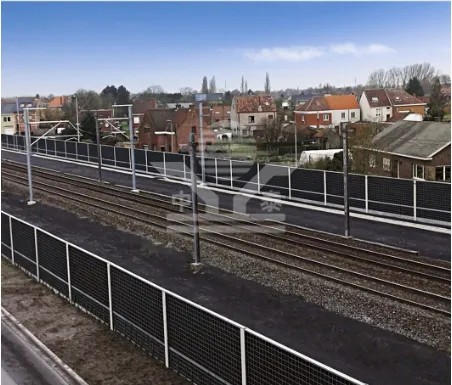Perforated Metal Sheet CAD Drawing An Essential Tool for Modern Design
In contemporary architecture and industrial design, the use of perforated metal sheets has become increasingly popular. These sheets, characterized by a series of holes or openings, not only serve various functional purposes but also contribute to aesthetic appeal. To maximize the potential of perforated metal sheets in any project, utilizing CAD (Computer-Aided Design) software to create detailed drawings is essential. This article explores the significance of CAD drawings for perforated metal sheets, their applications, and the benefits they bring to designers and manufacturers.
Perforated Metal Sheet CAD Drawing An Essential Tool for Modern Design
One of the primary advantages of CAD drawings for perforated metal sheets is the ability to visualize the final product accurately. Designers can manipulate various parameters, such as hole size, spacing, and orientation, to assess how these changes influence airflow, light transmission, and aesthetics. For example, larger holes may provide better ventilation, while smaller, closely spaced perforations can create interesting light effects or enhance sound absorption. With CAD software, designers can easily iterate through different designs, ensuring that the final choice aligns with both functional requirements and creative vision.
perforated metal sheet cad drawing

Another critical aspect of CAD drawings is their role in facilitating collaboration between various stakeholders in a project. Architects, engineers, and manufacturers can all benefit from a shared digital representation of the perforated metal sheet design. This ensures that everyone involved has a clear understanding of the specifications, reducing the likelihood of miscommunication and errors during the production process. Moreover, with the ability to generate detailed technical drawings, CAD software helps manufacturers prepare accurate quotes and timelines, which is crucial for project management.
The integration of CAD drawings with CNC (Computer Numerical Control) machining is another significant advantage when working with perforated metal sheets. CAD designs can be directly converted into machine code, allowing for precise cutting and perforation of metal sheets. This not only streamlines the production process but also enhances accuracy, ensuring that the final product meets the designer's specifications perfectly. With advancements in CNC technology, even complex and highly detailed patterns can be produced with minimal waste and reduced lead times.
Furthermore, the growing trend toward sustainability in design and manufacturing can also be supported by CAD drawings for perforated metal sheets. With careful design and planning, perforated sheets can help optimize material usage, reducing waste within the manufacturing process. CAD software allows designers to simulate the use of materials and assess the environmental impact of their designs, making it easier to adopt more sustainable practices.
In conclusion, CAD drawings for perforated metal sheets play an essential role in modern design and manufacturing. By combining innovative technology with creative exploration, designers can produce visually stunning and functional products that meet the demands of various applications. As the architectural and industrial landscapes continue to evolve, the importance of precise, collaborative, and sustainable design practices will only grow, making CAD drawings an indispensable tool in the creation of perforated metal sheet solutions.
-
Why Galvanized Trench Cover Steel Grating Resists Corrosion
NewsJul.10,2025
-
The Versatility and Strength of Stainless Expanded Metal Mesh
NewsJul.10,2025
-
Load Calculations in Steel Grating Platforms
NewsJul.10,2025
-
Keeping Pets and Kids Safe with Chicken Wire Deck Railing
NewsJul.10,2025
-
Hole Diameter and Pitch for Round Perforated Metal Sheets
NewsJul.10,2025
-
Aluminium Diamond Mesh in Modern Architecture
NewsJul.10,2025
Subscribe now!
Stay up to date with the latest on Fry Steeland industry news.

